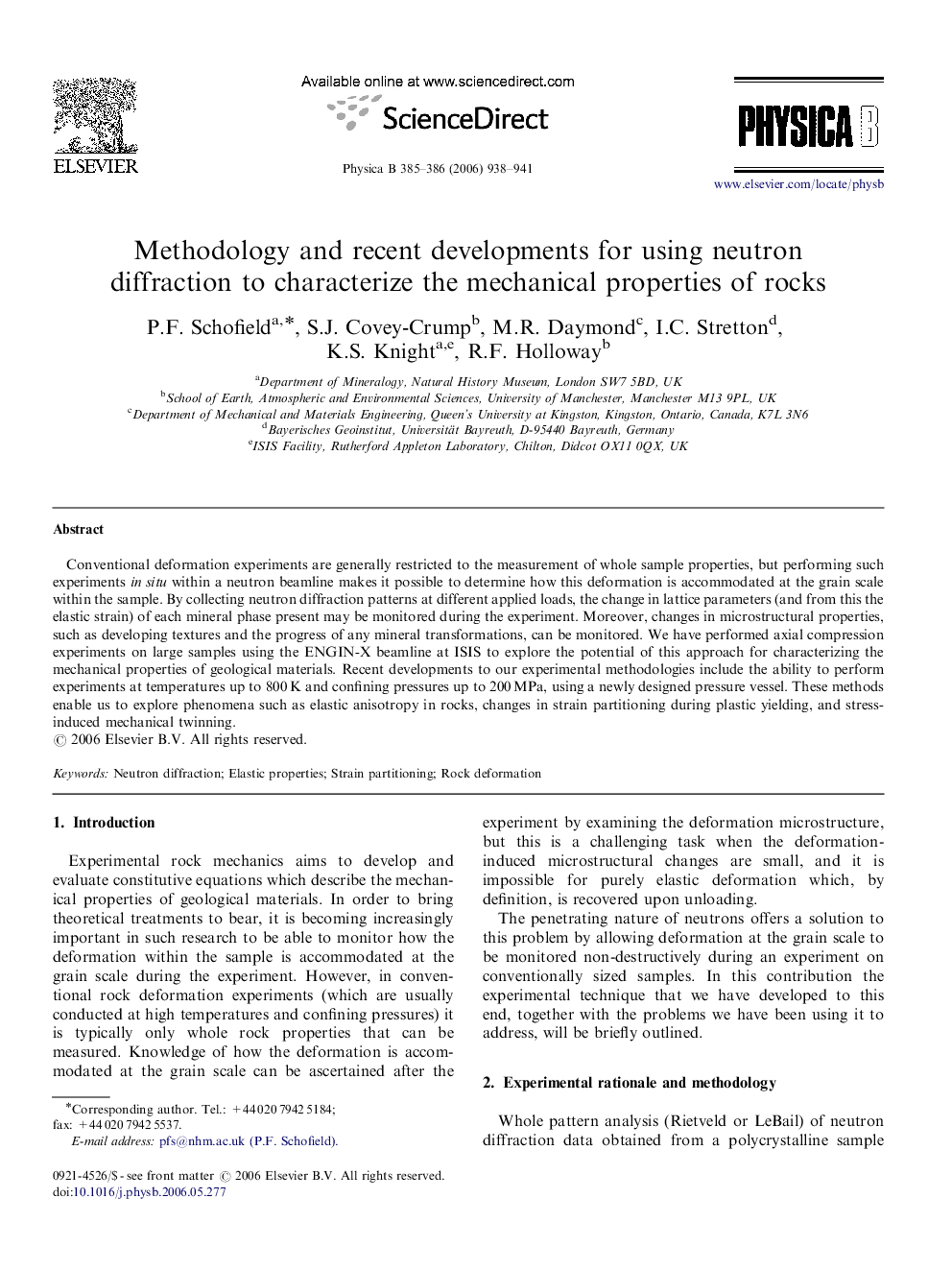| Article ID | Journal | Published Year | Pages | File Type |
|---|---|---|---|---|
| 1815883 | Physica B: Condensed Matter | 2006 | 4 Pages |
Abstract
Conventional deformation experiments are generally restricted to the measurement of whole sample properties, but performing such experiments in situ within a neutron beamline makes it possible to determine how this deformation is accommodated at the grain scale within the sample. By collecting neutron diffraction patterns at different applied loads, the change in lattice parameters (and from this the elastic strain) of each mineral phase present may be monitored during the experiment. Moreover, changes in microstructural properties, such as developing textures and the progress of any mineral transformations, can be monitored. We have performed axial compression experiments on large samples using the ENGIN-X beamline at ISIS to explore the potential of this approach for characterizing the mechanical properties of geological materials. Recent developments to our experimental methodologies include the ability to perform experiments at temperatures up to 800Â K and confining pressures up to 200Â MPa, using a newly designed pressure vessel. These methods enable us to explore phenomena such as elastic anisotropy in rocks, changes in strain partitioning during plastic yielding, and stress-induced mechanical twinning.
Related Topics
Physical Sciences and Engineering
Physics and Astronomy
Condensed Matter Physics
Authors
P.F. Schofield, S.J. Covey-Crump, M.R. Daymond, I.C. Stretton, K.S. Knight, R.F. Holloway,
